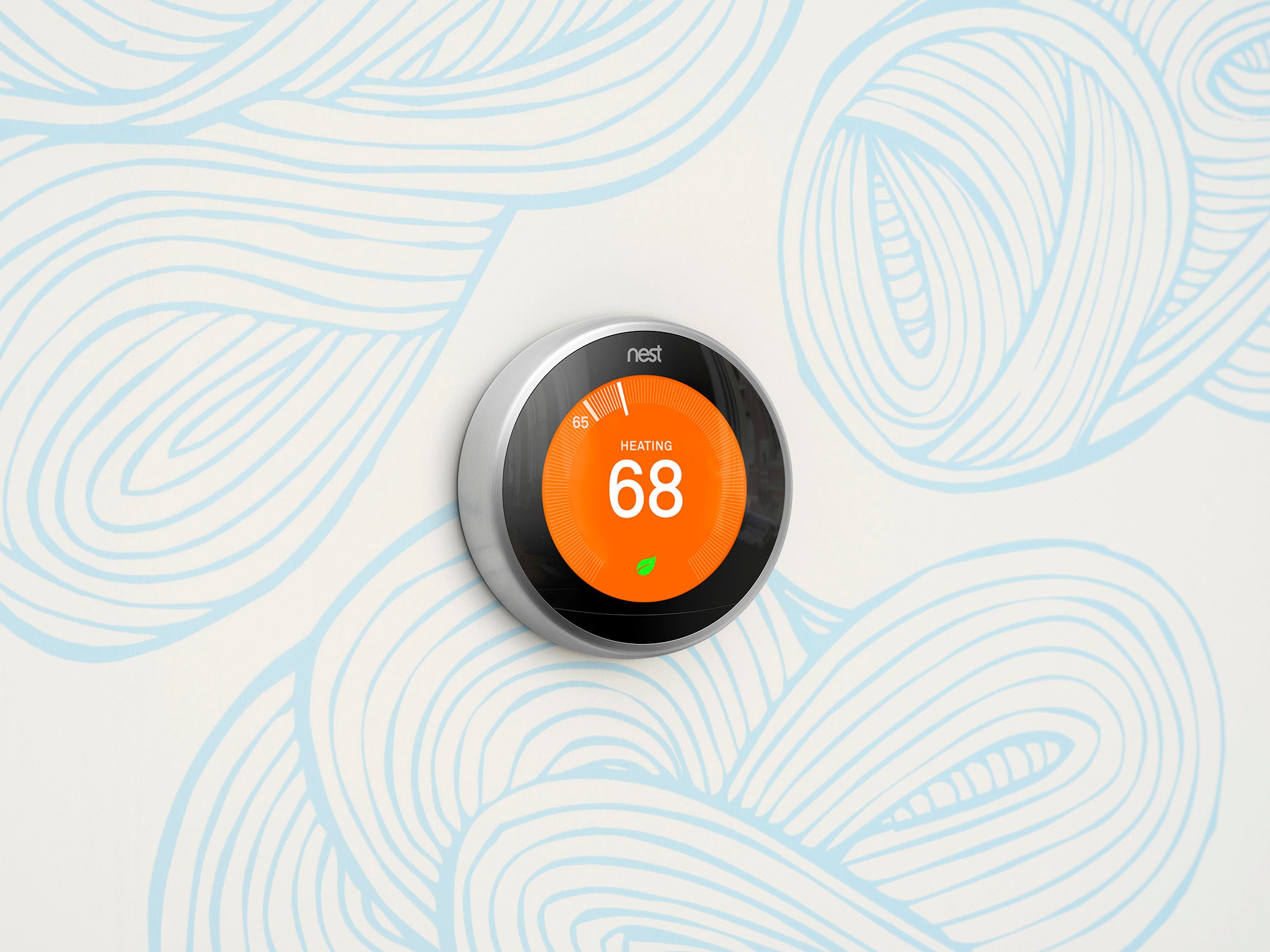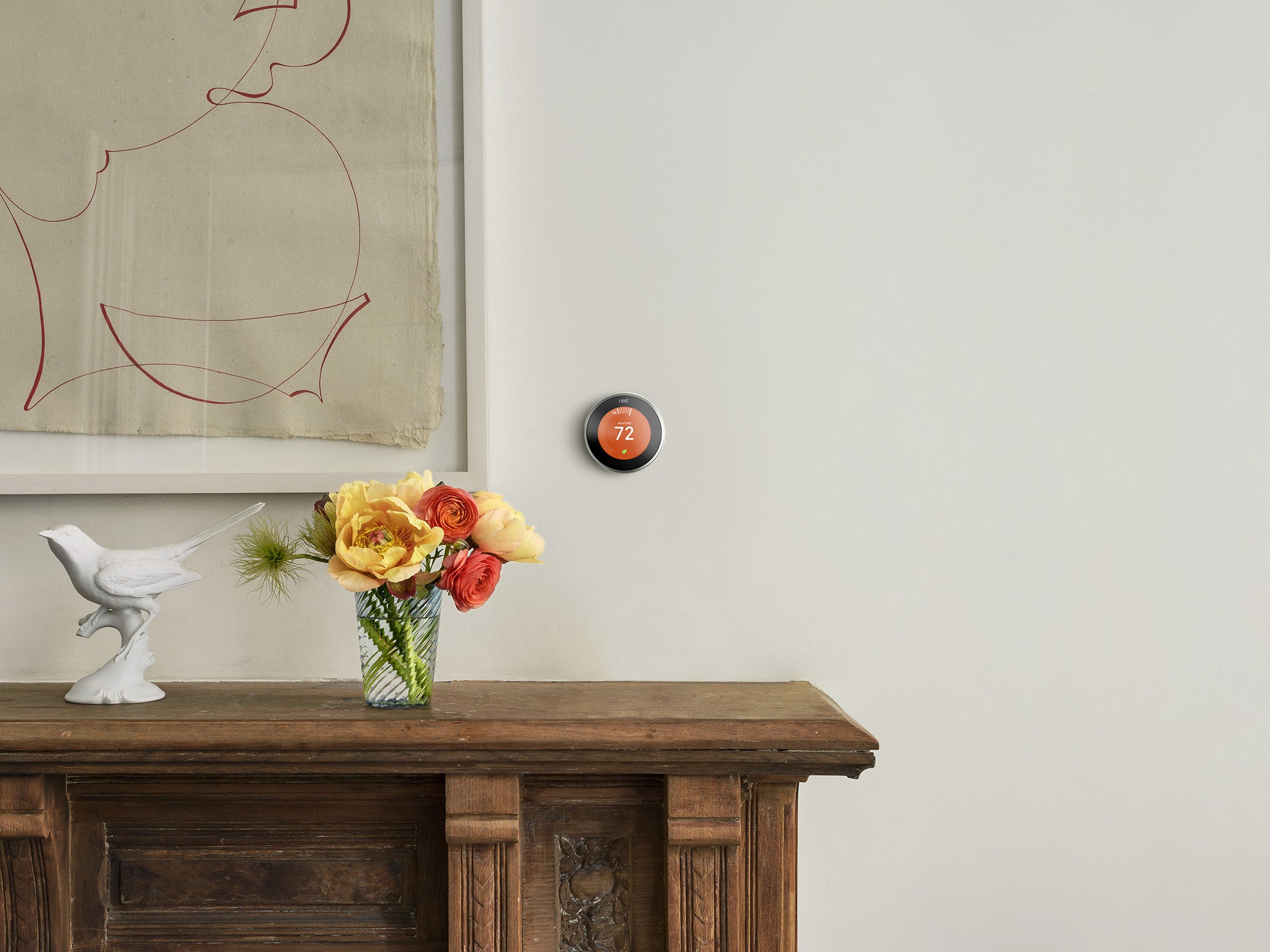Nest Learning Thermostat, Third Generation, review: Tremendous simplicity and reliability
It doesn't hurt that it looks attractive and works effortlessly

The latest version of the Nest Learning Thermostat became available last month. It promised significant improvements of the previous edition, version 2. After six weeks of testing, here’s my review.
I’d never used Nest before but I know the new Nest has a larger screen, though the thermostat itself isn't bigger overall. The system comes in two parts: the Heat Link that connects to your heating system, and the thermostat which can be mounted on the wall or, for an extra £29, clipped to a small stand which you can place on your desk, sideboard, wherever. Though don’t put it too near to or far from the radiators or it won’t assess the room temperature as accurately. The system, which is neat, small and beautifully designed, needs to be installed professionally. The price of the Nest Thermostat is £199, but installation only costs £50 on top of this.

The new thermostat has motion sensors which can tell if you’re nearby. This has two uses: first, as you hove into view the screen flashes on, showing the current temperature or, if you prefer, the time. Second, it works out how long it is since you’ve been spotted at home. After a certain amount of time it figures nobody’s there and turns down the heating, which is handy. Like every advanced feature on Nest, you can turn this one (which is called Auto Away) off if you don’t want it. Needless to say, if you rush to catch your plane to go on holiday and leave the central heating going full blast, you’ll be rather glad of Auto Away and its preference for not heating an empty home. In that situation, though, you have a fallback because you can turn the target temperature up or down on the smartphone app. You did remember to take your phone when you were rushing to the airport, didn’t you?
This smartphone flexibility is one of the best things about the latest round of connected thermostats like Nest, Hive and tado. It’s ideal if you’re heading home early and you know the heating isn’t scheduled to come on for hours. With a couple of touches to the app, you can turn it on from the bus so you walk into a toasty house.
Which brings us to one of the newest features on board, and one that’s not found in the US Nest, only European models. It can now control hot water heating remotely, too, if you have a hot water tank rather than a combi boiler system. And Auto Away kicks in after 48 hours for the water so there’s no energy wasted heating the tank while you’re sunning yourself on the beach, say.
The thermostat has a touchscreen and a rotating bezel which lets you change the target temperature easily. This rotation is a pleasant tactile experience and you may prefer to use this rather than the app as it feels so satisfying.

Nest bills itself as a learning thermostat so when you first get it, it monitors when you turn the heating up and down. So it quickly learns that you turn it off when you leave for work in the morning, and up when you get home (or start your commute home and adjust the temperature on the app).
Theoretically this means that you don't need to create a schedule at all. This is a good thing, especially if you have a heating system with an opaquely hard-to-set operating system – which is most of them, probably. The Nest is clever enough to spot anomalies as well as patterns, though with mixed results. When it was learning my behaviour, two late nights (new year’s eve and the next night) meant that it decided I wanted scorching heat at 2.30AM every night.
If you prefer, you can set up a schedule, which is easily done on the smartphone app. There’s another feature which comes into play here, called True Radiant. This learns how long it takes you system to reach your target temperature and comes on early to make it happen. It even factors in outside weather forecasts to know if it should get cracking earlier. So if, say, your schedule calls for 22 C at 6AM and it knows your place takes an hour to warm up, it’ll start firing the boiler at 5AM.
This is all very well but it meant in my case that on several cold days I was woken at 4.30AM by radiator gurgles. For me, True Radiant wasn’t ideal, but it may be for you. Not having to work out what time you should set the schedule for is a real bonus, gurgles apart.
There are a lot more sophistications to this system including an indication of how long it will take before your target temperature is reached, displayed on the thermostat. This is called Time-to-temp. And you can even set it so that Nest knows the thermostat sits in direct sunlight so it can adjust the temperature correctly. But the best thing about Nest is you rarely have to concern yourself with any of this. Turn the heat up or down as you need and, for as long as Nest is in learning mode, it’ll do the rest. You can intervene when you want to (like my new year’s late-night heating moments) but the general principle is it’ll do everything for you, thank you very much.
I love it. Its simplicity and reliability are tremendous and I like knowing that if I forget to turn the heating off, Nest will take care of things, though always ensuring the temperature doesn’t drop so low that burst pipes become a possibility. Nest claims that it regularly saves its users money and monthly email reports reveal how your energy usage is changing.
It doesn't hurt that it looks attractive and works effortlessly. And the thought of not having to programme a schedule using my previous unintuitive system is a bonus, too.
Join our commenting forum
Join thought-provoking conversations, follow other Independent readers and see their replies
1Comments